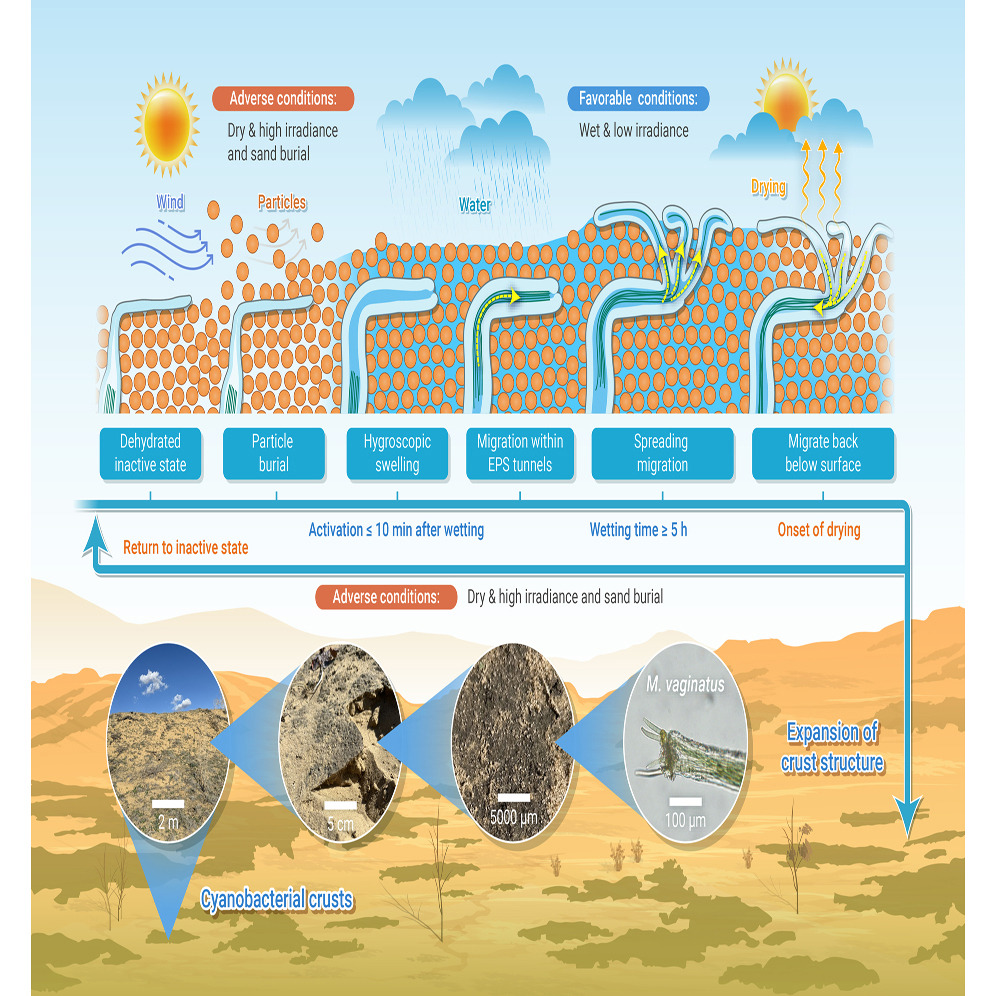
X-ray microCT for cyanobacterial-dominated biological soil crusts. Yellow: sand; Blue: extracellular polymeric substances; Gray: pore filled with gas; Green: trichomes. (Image by XIEG)
A new study published in The Innovation has revealed the microstructure and expansion mechanism of cyanobacteria-dominated biological soil crusts (BSCs). By employing micro-scale X-ray computed tomography (X-ray microCT), researchers led by Prof. ZHANG Yuanming from the Xinjiang Institute of Ecology and Geography (XIEG) of the Chinese Academy of Sciences visualized the internal structural responses of cyanobacteria-dominated BSCs in unprecedented detail.
Biological soil crusts are essential in arid regions worldwide, playing key roles in soil stabilization, nutrient cycling, and water regulation. Cyanobacteria are foundational organisms in these crusts, using their trichomes and secreted extracellular polymeric substances (EPS) to bind soil particles. Their ability to move within soil layers is closely linked to crust formation and expansion.
The researchers discovered that Microcoleus vaginatus, a typical cyanobacterial species in BSCs, constructs microscopic, tunnel-like structures within the crust using secreted EPS. These EPS tunnels connect the trichomes of M. vaginatus, located approximately 300 µm below the surface, to the crust's surface. Upon wetting, Microcoleus vaginatus begins migrating towards the surface within minutes, moving as bundled trichomes within these EPS tunnels. This enables cyanobacteria to secure soil particles and thrive in arid environments.
However, the researchers also found that in short wetting period, the existing EPS on the BSC surface is insufficient to firmly fix newly deposited soil particles. This is likely due to the limited contact area between the EPS and the soil particles, resulting in weak adhesion. After a prolonged wetting period, the motile trichomes spread throughout the soil layer, binding the soil particles not only through entanglement but also through newly secreted EPS.
Therefore, cyanobacterial-dominated BSC expansion relies on long wetting periods, such as those during week-long snowmelt and occasional hour-long rainfall. Compared to lichen and moss, cyanobacterial allows for much faster crust development.
"Incorporating long wetting periods into cyanobacterial crust-based ecological restoration approaches could significantly accelerate crust development and soil stabilization," said LI Tong, first author of the study.
This study sheds light on how cyanobacteria-dominated BSCs survive in harsh desert environment and highlights the critical roles of cyanobacterial for the expansion of biological soil crusts.

Schematic illustration depicting cyanobacteria-dominated BSC expansion process. (Image by XIEG)






